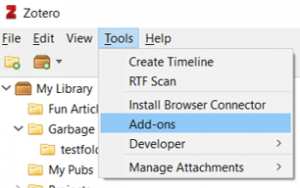
A spectrum of other BRAF mutations are currently under study. These mutations respond to treatment with the dabrafenib and trametinib regimen. Among all BRAF mutations, BRAF V600E is the most common, accounting for approximately 50% of all BRAF mutations in NSCLC. It is critically important to perform testing for these mutations before starting therapy. “The best therapeutic outcome is seen if therapy is targeted to the first 3 mutations- EGFR, ALK, and ROS1. EGFR mutations occur in 10% to 20% of all adenocarcinomas, ALK rearrangements in 5% to 7%, ROS1 rearrangements in 1% to 3%, and BRAF mutations in 2% to 5%. Testing is recommended for the most commonly observed biomarkers, including EGFR, ALK, ROS1, BRAF, and PD-L1 immunohistochemistry, all of which have approved targeted therapies or immunotherapies. The 2021 NCCN Guidelines now list osimertinib as an option for adjuvant therapy in patients with resectable stage IIB–IIIA or high-risk stage IB–IIA NSCLC harboring EGFR mutations who received previous adjuvant chemotherapy or are ineligible to receive platinum-based chemotherapy.īroad, panel-based testing is strongly advised in appropriate patients with stage IV NSCLC, because it is more efficient than testing for one biomarker at a time.

4 “This study galvanized the push for earlier testing in NSCLC,” Dr.
Recommended citation for nccn guidelines using zotero trial#
The ADAURA trial found that the third-generation EGFR tyrosine kinase inhibitor (TKI) osimertinib improved 3-year disease-free survival in stage IB–III, EGFR-positive NSCLC. 1 – 3Īnother change in the guidelines is a strong push toward testing in resectable stage IB–IIIA NSCLC. The guidelines recommend considering testing in stage IV squamous cell lung cancer as quickly as possible upon diagnosis, because it is not possible to exclude an adenocarcinoma component in a biopsy, and studies show that approximately 5% to 10% of tumors with squamous cell histology harbor targetable mutations when considered across all targetable alterations. The 2021 guidelines include broader language related to testing,” she noted. “We believe that all patients with NSCLC should be tested, and that molecular testing should be considered for squamous cell lung cancer. This has been well illustrated and it makes testing critically important for patients with NSCLC,” she continued. Different biomarkers predict response to different agents. “Targeted therapy cannot be given to everyone. This is because if a recommended targeted option is identified, it is the optimal first-line therapy,” explained Dr. For newly diagnosed stage IV NSCLC, there is always a tension between the need to start therapy versus waiting for molecular results.

“A relatively new addition to the NCCN Guidelines for NSCLC is dedicated to biomarker selection. This is because numerous lines of evidence show that patients with stage IV NSCLC and a targetable mutation typically have improved overall survival (OS) when treated with a targeted therapy. Riely, MD, PhD, Vice Chair, Clinical Research, Memorial Sloan Kettering Cancer Center, at the NCCN 2021 Virtual Annual Conference. Aisner, MD, PhD, Associate Professor, University of Colorado Cancer Center, and Gregory J. Select "Web page" as your reference type and fill in the citation information including the URL, as shown in the example below.Biomarker testing is now recommended in the NCCN Clinical Practice Guidelines in Oncology (NCCN Guidelines) for Non–Small Cell Lung Cancer (NSCLC) for all appropriate patients with newly diagnosed stage IV disease, and can be considered for those with squamous histology, explained Dara L. You can enter the reference manually by opening EndNote, choosing the "Reference" file menu, and choosing "New Reference," which will give you a blank record to fill out. Unfortunately, there's no way to directly export the citation to EndNote.


In EndNote, you can cite NCCN guidelines. National Comprehensive Cancer Network. Bone Cancer (Version 2.2019). . The following information should be included: In general, you will cite NCCN guidelines the same as you would cite a web page. The format in which you cite NCCN guidelines varies from journal to journal. Publications Co-authored or Contributed to by Library Staff.The Making Cancer History® Voices Oral History Project.


 0 kommentar(er)
0 kommentar(er)
